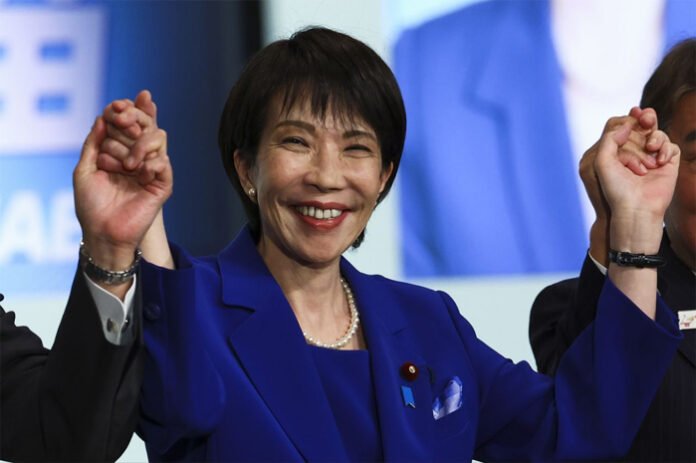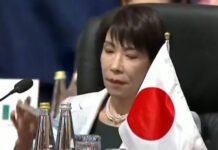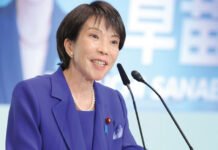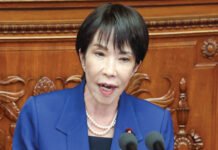In a historic first for Japan, Sanae Takaichi has been officially elected as the nation’s Prime Minister, making her the first woman to hold the office in Japan’s modern political history. The election has been widely regarded as a milestone for gender equality in the traditionally male-dominated Japanese political landscape. However, it also marks a significant policy shift toward hard-right nationalism, with implications for Japan’s domestic and foreign affairs.
A historic win
Takaichi, a longtime member of the Liberal Democratic Party (LDP), won the leadership race with broad support from conservative lawmakers. Analysts note that her victory reflects both a desire for continuity in security policies and a pushback against moderate factions within the party.
“Takaichi’s election is historic not just for gender, but for the ideological trajectory she represents,” says Professor Hiroshi Watanabe, a political analyst at Tokyo University. “Her hardline stance on defense and nationalist economic policies signals a departure from the centrist approaches of previous administrations.”
Policy priorities
Takaichi has already signaled her hard-right agenda, including:
Strengthening Japan’s Self-Defense Forces – she supports increased defense budgets amid growing regional tensions with China and North Korea.
Tough immigration policies – a conservative approach aimed at preserving Japanese cultural identity.
Economic nationalism – including protectionist measures to support domestic industries and reduce reliance on foreign imports.
Historical education reforms – emphasizing Japan’s cultural and historical heritage in schools.
Experts warn that these policy directions could strain relationships with Japan’s neighbors while potentially appealing to domestic nationalist sentiment.
Reactions at home and abroad
Within Japan, reactions are mixed. Women’s advocacy groups hailed the election as a step forward in gender representation, while opposition parties caution that her right-leaning policies may curtail civil liberties.
Internationally, Takaichi’s election has caught the attention of the United States, China, and South Korea, all keenly observing Japan’s foreign policy trajectory. Analysts suggest that U.S.-Japan defense cooperation may strengthen, while regional trade negotiations could face new challenges.
“Sanae Takaichi’s leadership may redefine Japan’s role in Asia,” says Dr. Emily Chang, East Asia policy expert at Harvard University. “Her approach is expected to be assertive both economically and militarily.”
Historical context
Japan has had female leaders at local and party levels, but national office has remained male-dominated for decades. Takaichi’s rise reflects broader societal changes, including increased female participation in politics and a generational shift within the LDP.
Looking ahead
Observers will closely monitor her early cabinet appointments, policy rollouts, and responses to domestic challenges such as aging demographics and economic recovery post-COVID. Takaichi’s leadership will also be pivotal in shaping Japan’s stance on global issues, including security, trade, and climate initiatives.
“Japan is at a crossroads,” notes political commentator Keiko Fujimoto. “The combination of historical firsts and hardline policies makes this administration one to watch closely.”
Conclusion
Sanae Takaichi’s election as Japan’s first female Prime Minister is a historic moment for gender equality and a critical turning point for Japan’s domestic and foreign policy. While it offers hope for breaking the glass ceiling, her hard-right political stance presents both opportunities and challenges on the global stage.
















